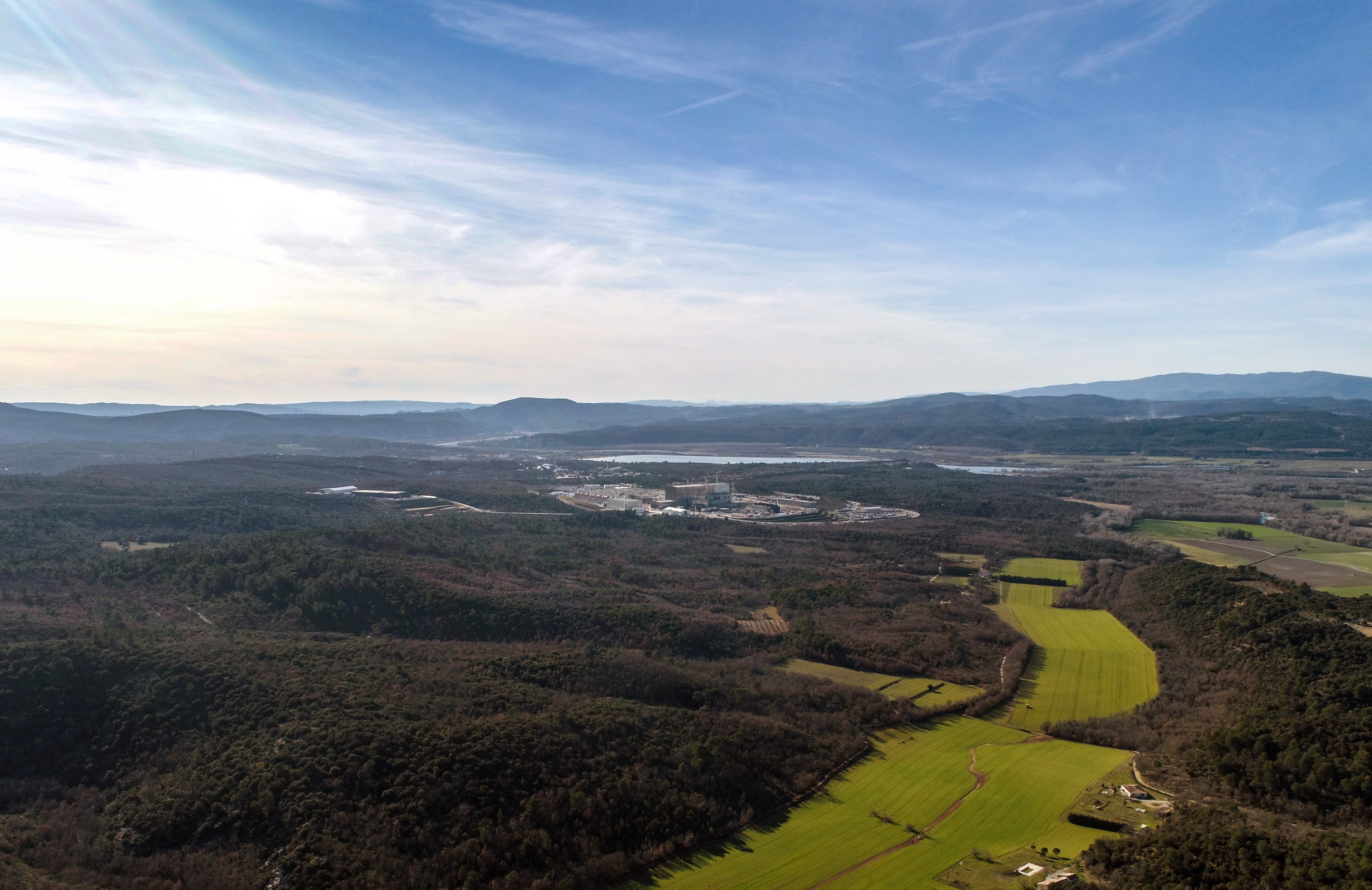A drone operator needs to be something of a meteorologist—when surveying the ITER site, it is important to take into consideration the hour of the day and the angle of the sun. There are parts of the ITER site that shine only in the early morning light, others that are at their best in the slanting afternoon sun exclusively.
Emmanuel Riche, who has flown his drone over ITER since 2015, did his last survey amidst giboulées, but managed to capture, once again, the spectacular beauty of the site and the imposing presence of its many buildings.
As always, the Tokamak Complex is stealing the show. The 400,000-tonne edifice has changed a lot since it was
last photographed from up high in October of last year.
At the time, the first pillars of the future crane hall were just being installed on both sides of the central Tokamak Building. Four month later, the steel structure is complete and cladding is progressing fast.
What happens inside (and a lot is happening) is now unfortunately hidden from view. The roof now blocks the view of the bioshield's familiar shape.
By comparing the present images to the ones taken last October, one can play the "spot the differences" game. There are particularly striking at the north end of the platform, where progress on the heat rejection zone has been spectacular, and one long-time essential facility for the construction of ITER—the concrete batching plant—has simply disappeared.
This week's ITER NOW video (1.5) features Emmanuel Riche and his work. You can view it here.







